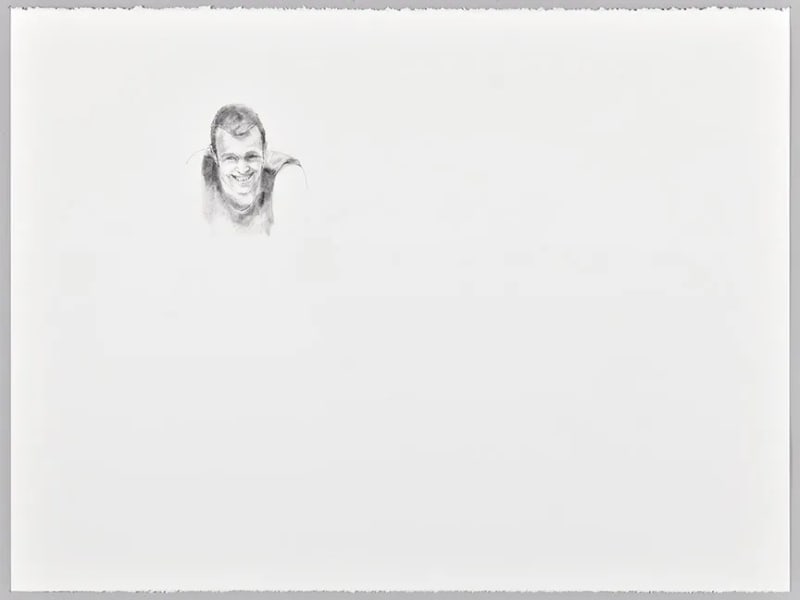For Steve Locke, the grid—that modernist symbol of order and reason—exemplifies a vastly different kind of modernity: antiblack violence. At first sight innocuous, Locke’s sensitive graphite portraits, arranged into grids, depict white murderers of black people. The series “#Killers,” 2017–18, is the culmination of several months of research in which Locke catalogues and condemns an infamous mob across sixty-one drawings. An overwhelming amount of negative space consumes these images, bringing the whiteness of the killers to the fore. Among them are George Zimmerman, based on a selfie he took while on vacation; ex-cop Jason Stockley, rendered from a photo of him receiving an acquittal in a Saint Louis courtroom; and officer Timothy Loehmann as he was, according to the work’s title, fishing. Equally visible is the absence of those killed by these men: Trayvon Martin, Anthony Lamar Smith, Tamir Rice. For Locke, the past is all too present. One of the few exceptions to the sea of faces here is Emmett Till Memorial Marker with Bullet Holes, 2018—a piece that illustrates an act of desecration surely connected to the evil surrounding Till’s death.
The grid persists in “Family Photos,” a series that acknowledges the media’s role in disseminating spectacles of violent racism. Rather than opting to accumulate contemporary spectacles of hatred, Locke chooses to frame historical ones—pictures of lynchings. Placed in store-bought frames intended for good-humored snapshots, these images reintroduce ancestral trauma into the household. Each of Locke’s photographs features a framed image sitting on a coffee table in front of a wall painted either red, yellow, green, or blue. The works, which were first exhibited at Boston’s Gallery Kayafas in 2016, calls for the frames’ inscriptions to be read. For instance, one says, “It’s not where you go or what you do, it’s who’s beside you that counts.” These works, according to Locke, “are the Family Pictures we have long pretended do not exist.”

